Introduction: Why Photography Lovers Need the Best Camera Phones in 2025.
In the ever-evolving world of smartphones, the race to deliver the ultimate photography experience has never been more competitive.
With every new release, brands are pushing the boundaries of innovation, combining cutting-edge hardware with AI-powered software to cater to photography lovers who demand nothing but the best.
Whether you’re a professional photographer seeking a versatile tool or an enthusiast looking to capture stunning memories, choosing one of the [best camera phones in 2025] can transform your photography game.
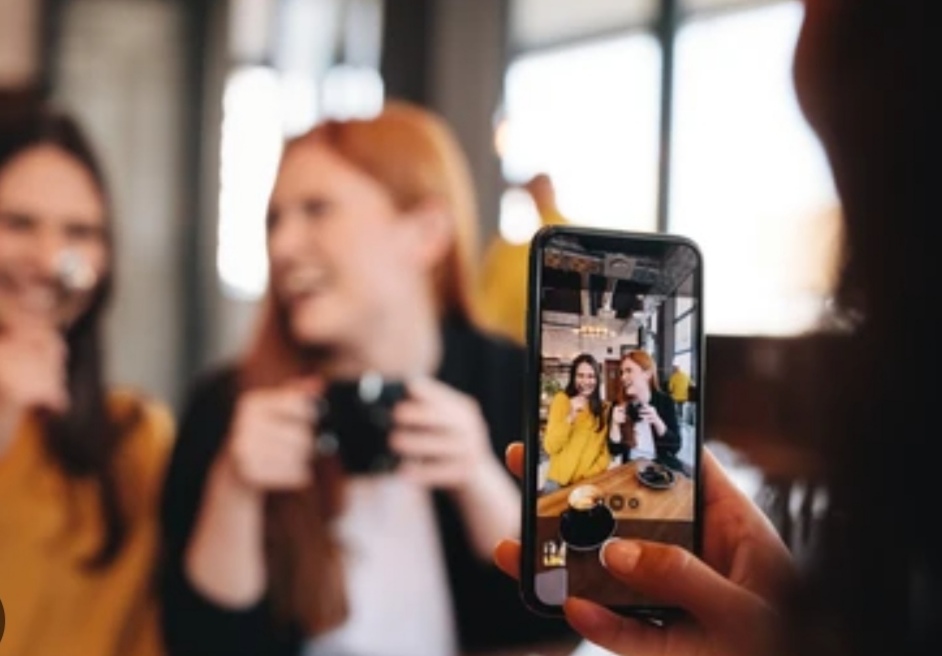
Gone are the days when smartphones were mere communication devices.
Today, they rival high-end DSLRs, offering features like advanced night modes, periscope zoom lenses, and professional-grade video stabilization.
With so many options available, it’s essential to pick a smartphone that suits your unique needs—whether that’s superior low-light performance, incredible zoom capabilities, or jaw-dropping portrait effects.
But what makes a smartphone truly worthy of the title “best”?
It’s not just about megapixels; it’s about the complete package.
From sensor size to computational photography and editing tools, the best camera phones in 2025 deliver on all fronts.
As we are in 2025 now, these devices are setting the standard for what’s to come in mobile photography.
In this guide, we’ll take a deep dive into the top 10 camera smartphones of 2025—breaking down their features, performance, and unique innovations to help you make an informed decision.
Along the way, we’ll sprinkle in tips, comparisons, and insights to answer all your questions about choosing the right device for your needs.
By the end, you’ll know exactly why these phones are worth your investment and how they stack up against the competition.
Why This Guide Stands Out
Unlike other lists, this article is more than just a rundown of specs.
We’ve conducted thorough research, evaluated real-world performance, and analyzed user feedback to provide a comprehensive, up-to-date guide.
Whether you’re looking for the best camera phone for low-light photography or the best budget camera phone of 2025, this is your go-to resource.
Ready to discover the phone that will elevate your photography skills?
Keep reading to uncover the best options on the market and take your mobile photography to the next level.
Stay tuned as we reveal the top picks, discuss the trends shaping 2025’s camera phones, and help you decide which device is truly worth your hard-earned money.
Let’s dive in!
Why Camera Phones Matter More Than Ever
In today’s fast-paced digital world, the significance of camera phones has skyrocketed.
Photography has evolved into a vital part of our daily lives, and smartphones have made capturing moments more accessible and intuitive than ever before.
With groundbreaking advancements in hardware and software, the best camera phones 2025 promise to deliver a professional-grade photography experience right from your pocket.
This shift underscores why camera phones are now indispensable, not just as communication tools but as powerful creative instruments.
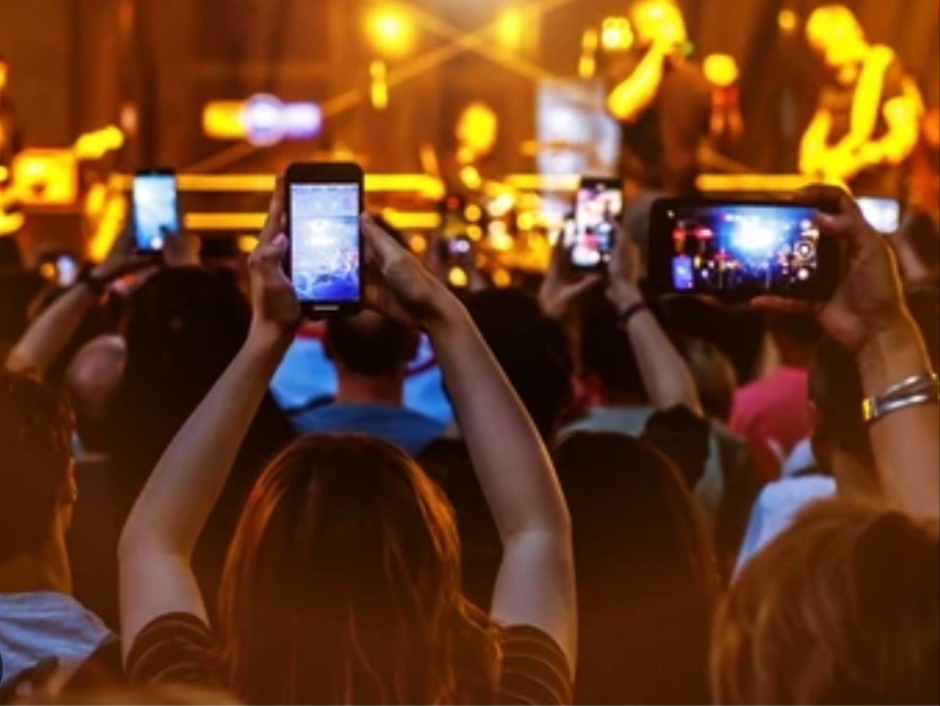
The Rise of Smartphone Photography
The last decade has seen a revolution in how we capture, share, and store memories.
Once limited to bulky DSLRs and point-and-shoot cameras, high-quality photography is now just a tap away on your smartphone.
The demand for ultra-high-resolution cameras, enhanced low-light capabilities, and AI-powered editing tools has reshaped the mobile industry.
Today, people rely on their phones for everything from vacation snapshots to professional content creation, elevating smartphone photography into an art form.
Key Reasons for the Growth of Smartphone Photography:
- Social Media Integration: Platforms like Instagram, TikTok, and Pinterest have made visual content king. A phone with a great camera ensures your photos stand out.
- Accessibility and Convenience: Unlike traditional cameras, smartphones are always within reach, allowing users to seize spontaneous moments.
- Continuous Innovation: From computational photography to multi-lens setups, each year introduces new features that make smartphones more versatile for photographers.
Looking Ahead:
The trend isn’t slowing down. The best camera phones in 2025 are set to include even more exciting features like periscope zoom, real-time 3D mapping, and integrated augmented reality photography—making them indispensable tools for professionals and hobbyists alike.
Benefits of Camera Phones Over Traditional Cameras
Why choose a smartphone over a DSLR or mirrorless camera?
While traditional cameras have their place, camera phones offer unique advantages that cater to both beginners and seasoned photographers.
Below, we break down why a smartphone might be your best bet for capturing stunning images:
Portability and Convenience
One of the standout benefits of camera phones is their portability. Unlike DSLRs, which require extra bags, lenses, and accessories, smartphones fit snugly into your pocket. This ease of use means you can capture moments on the go—whether you’re hiking in the mountains or enjoying a night out with friends.
Why Portability Matters:
- Travel-Friendly: Smartphones eliminate the hassle of carrying bulky gear, making them perfect for spontaneous photography.
- Always Ready: Moments are fleeting, and having a camera always on hand ensures you never miss a shot.
- Lightweight Design: Modern smartphones are sleek yet powerful, proving that big things often come in small packages.
Tip: Pair your smartphone with lightweight accessories like [portable gimbals] or [clip-on lenses] to maximize versatility without sacrificing convenience.
AI and Computational Photography
The rise of artificial intelligence (AI) has transformed the way we take photos. Unlike traditional cameras, smartphones leverage computational photography to enhance image quality automatically. Whether it’s improving sharpness, reducing noise, or simulating professional-grade effects, AI ensures your photos look stunning with minimal effort.
How AI Enhances Smartphone Photography:
- Scene Recognition: Modern smartphones can detect whether you’re shooting a sunset, a portrait, or a night scene and adjust settings automatically for the best results.
- Portrait Mode: By simulating bokeh (background blur), even entry-level phones can produce DSLR-like portraits.
- Enhanced Low-Light Performance: Phones like the [Samsung Galaxy S24 Ultra] and [Google Pixel 9 Pro] excel in low light thanks to AI algorithms that reduce noise and boost clarity.
- Editing Tools: With built-in apps powered by AI, you can edit your photos professionally without needing expensive software.
Looking Ahead:
As we approach 2025, the best camera phones will take AI to the next level, integrating features like real-time video enhancements, motion detection, and augmented reality filters. These advancements will make smartphone photography even more seamless and enjoyable.
Why Camera Phones Dominate Photography in 2025 and Beyond
The rise of smartphone photography and the incredible convenience of camera phones over traditional cameras underscore why these devices are now indispensable.
As the best camera phones 2025 roll out, expect even more features that make them a worthy replacement for standalone cameras.
If you’re looking to upgrade your photography game, investing in one of these devices is a no-brainer.
Ready to capture stunning photos with ease? Explore our guide to find the perfect camera phone for your needs!
How We Chose the Best Camera Phones of 2025
Selecting the best camera phones of 2025 wasn’t just about reviewing specs on paper.
Instead, we took a meticulous, hands-on approach to evaluate each phone’s real-world performance, ensuring the recommendations we make are genuinely reliable.
With photography enthusiasts and professionals in mind, we focused on a mix of hardware quality, software capabilities, and user experience.
Here’s a detailed look into how we narrowed down our top picks.

Methodology and Criteria
Our methodology was designed to deliver accurate, unbiased insights into which camera phones truly stood out in 2025. Here’s a breakdown of the key factors we considered:
1. Real-World Testing:
We tested each smartphone in various settings, including low light, daylight, and indoor environments, to evaluate how well it performs under different conditions. Real-world testing helps us understand how cameras handle everyday scenarios, from vacation snapshots to portrait shoots.
2. User Experience:
Ease of use matters, especially for beginners. We examined whether the phone’s camera app is intuitive, how quickly it launches, and the accessibility of features like night mode, manual settings, and video stabilization tools.
3. Innovation and Features:
In an era of rapid technological advancement, innovation plays a crucial role. Phones with features like AI-powered scene recognition, periscope zoom, or high-resolution sensors earned extra points in our rankings.
4. Hardware and Software Synergy:
It’s not just about megapixels. We analyzed how the phone’s hardware (lens, sensor, and processor) integrates with its software to produce stunning results. For example, the computational photography capabilities in the [Google Pixel 8 Pro] stood out during our tests.
Photography Features We Prioritized
To ensure our guide catered to every kind of photographer—whether professional or casual—we focused on the features that make a camera phone exceptional:
1. Night Mode:
Low-light photography remains a challenge for many phones, but top-tier devices now excel in this area. We tested how well each phone handled dimly lit conditions, focusing on clarity, reduced noise, and color accuracy.
2. Zoom Capabilities:
Modern smartphones offer optical zoom, digital zoom, or even hybrid zoom. Phones like the Samsung Galaxy S24 Ultra impressed us with their periscope zoom, capturing distant subjects without compromising quality.
3. Video Recording:
From 4K resolution to cinematic stabilization, video recording is a must-have feature. We evaluated the smoothness, resolution, and overall quality of videos shot with each phone.
4. Pro Photography Tools:
For advanced users, we prioritized phones with manual controls, RAW format support, and customizable settings, allowing professionals to fine-tune their shots.
Tip: Look for a phone with robust AI and computational photography tools for seamless enhancement of your images. Check out the best camera phones 2025 for future-ready innovations.
Hands-On Testing vs. Specs-Based Evaluation
While technical specifications are helpful, they only tell part of the story. That’s why we focused on real-world testing to assess how each phone performs in practical scenarios.
Why Real-World Testing Matters:
- Specs don’t account for software optimization, which plays a significant role in image quality.
- Real-world tests show how a phone adapts to challenging conditions like moving subjects, low light, or varying temperatures.
- User experience factors, like ease of access to key features, can only be judged hands-on.
Our Testing Process:
- Photo Comparisons: We took identical shots with each phone and compared their color accuracy, sharpness, and dynamic range.
- Diverse Scenarios: From portraits to landscapes, we tested each phone across multiple scenarios to understand its versatility.
- Video Recording Trials: We evaluated the smoothness of videos, especially in motion-heavy situations like running or biking.
While specs like megapixels and sensor size are important, our hands-on evaluation ensures that the phones we recommend deliver exceptional real-world results.
What Makes a Smartphone Camera Stand Out?
Smartphone cameras have come a long way, but only a few rise above the rest.
Here’s what makes a camera phone truly exceptional in today’s competitive market:
1. Advanced Sensor Technology:
A high-quality sensor is the heart of any great camera.
Larger sensors like those in the Sony Xperia 1 V offer better light capture, resulting in sharper and more vibrant photos.
2. Computational Photography:
This technology has redefined what’s possible with a smartphone camera.
Features like HDR+, photo merging, and AI enhancements help even casual users take professional-looking photos.
3. Multi-Lens Setups:
Phones with versatile lenses—ultra-wide, telephoto, and macro—allow users to explore different perspectives.
Devices like the iPhone 15 Pro Max excel here, providing unparalleled flexibility.
4. Seamless Software Integration:
A good camera phone doesn’t just take great pictures; it makes editing and sharing them easy.
Integrated photo-editing tools and social media optimization make a huge difference.
5. Future-Proof Features:
The best camera phones 2025 are expected to include even more advanced features like 3D photography, real-time AR integration, and faster image processing, making them perfect for early adopters who want cutting-edge technology.
Why Our Selection Method Stands Out
By combining real-world testing, detailed spec analysis, and a focus on user needs, we’ve ensured that our recommendations for the best camera phones of 2025 are both accurate and practical.
Whether you’re an amateur photographer or a seasoned pro, the phones on this list deliver unmatched value and performance.
Curious to see which phones made the cut? Explore our top picks for the best camera phones 2025 now!
Top 10 Camera Smartphones of 2025
The following list highlights the top-performing camera smartphones of 2025, chosen for their incredible photography capabilities, advanced features, and user-friendly design.
Whether you’re a casual photo enthusiast or a professional content creator, these devices have what it takes to capture stunning images and videos.
We also touch upon their unique features and identify any trade-offs to help you make an informed choice.
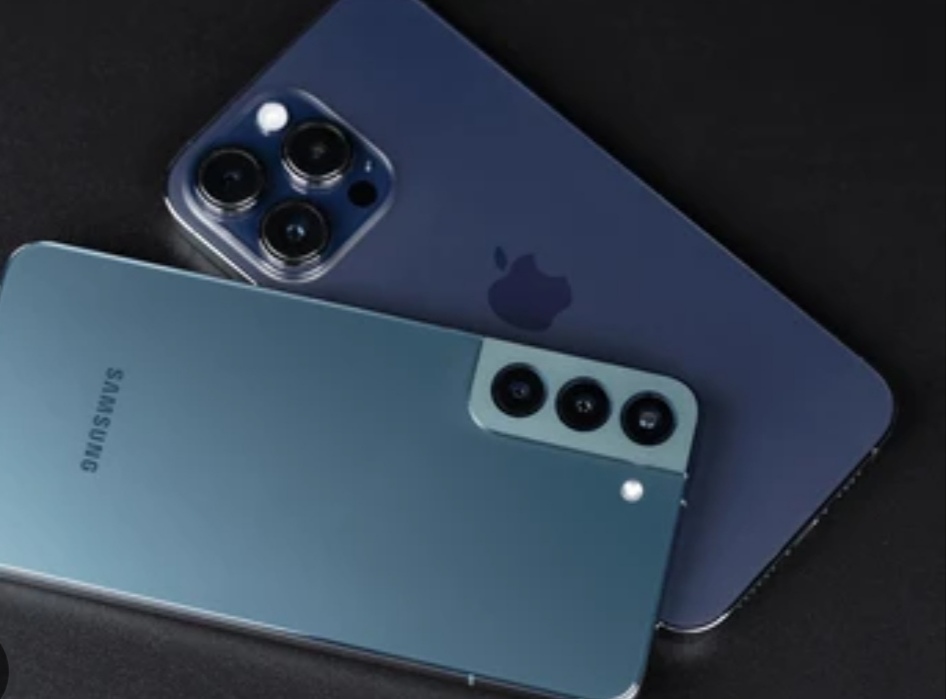
1. Huawei Pura 70 Ultra
Overview and Key Specifications
The Huawei Pura 70 Ultra is a flagship device that redefines smartphone photography in 2025.
Its standout feature is its large 1-inch sensor, which offers unparalleled light capture and detail reproduction.
Powered by the Kirin 9900X chipset, the Pura 70 Ultra ensures seamless performance for both photography and daily use.
Key Specs:
- Primary Camera: 50MP Ultra Vision sensor with f/1.4 aperture
- Secondary Cameras: 48MP periscope telephoto, 20MP ultra-wide
- Front Camera: 32MP
- Display: 6.8-inch AMOLED, 120Hz refresh rate
- Battery: 5,200mAh with 66W fast charging
Camera System and Performance
Huawei continues to excel in computational photography.
The Pura 70 Ultra combines a large sensor with AI-enhanced algorithms for exceptional detail and clarity, especially in low-light scenarios.
The periscope zoom offers up to 10x optical zoom with impressive sharpness, making it ideal for wildlife and travel photography.
Unique Features and Innovations
- Night Owl Mode: Superior low-light photography without the need for additional lighting.
- Periscope Zoom Lens: Smooth, high-quality zoom for distant subjects.
- AI-Powered Scene Recognition: Automatically adjusts settings for the best shot based on the scene.
- RAW Support: Offers maximum flexibility for professional editing.
Pros and Cons
Pros:
- Exceptional low-light performance
- Industry-leading zoom capabilities
- Stunning display for photo previews
Cons:
- Pricey for casual users
- No headphone jack
2. Google Pixel 9 Pro XL
Overview and Key Specifications
The Google Pixel 9 Pro XL is a testament to Google’s prowess in computational photography.
This device is designed for photography enthusiasts who want point-and-shoot simplicity with professional-grade results.
Powered by the Tensor G4 processor, it provides seamless AI processing for both photos and videos.
Key Specs:
- Primary Camera: 64MP with dual-pixel autofocus
- Secondary Cameras: 50MP ultra-wide, 12MP macro
- Front Camera: 12MP with ultra-wide lens
- Display: 6.7-inch OLED, 120Hz refresh rate
- Battery: 4,800mAh with 45W fast charging
Camera System and Performance
The Pixel 9 Pro XL shines with its AI-enhanced photography tools, including Magic Eraser, which removes unwanted objects from photos, and Face Unblur, ensuring every portrait looks flawless.
The ultra-wide camera captures more of the scene, while the macro lens excels at detailed close-ups.
Unique Features and Innovations
- Real Tone Technology: Perfect skin tone rendering for portraits.
- Astrophotography Mode: Captures the beauty of the night sky with precision.
- Cinematic Video Mode: Professional-quality videos with depth-of-field effects.
- Built-in Editing Tools: Edit photos directly within Google Photos for a seamless workflow.
Pros and Cons
Pros:
- Outstanding computational photography features
- User-friendly camera interface
- Regular software updates
Cons:
- Limited optical zoom compared to competitors
- Slower charging speeds
3. Honor Magic6 Pro
Overview and Key Specifications
The Honor Magic6 Pro offers a balanced mix of photography innovation and sleek design, making it one of the most versatile smartphones of 2025.
Its advanced camera array and AI-enhanced capabilities make it a strong contender for photography lovers.
Key Specs:
- Primary Camera: 54MP with OIS
- Secondary Cameras: 50MP ultra-wide, 32MP telephoto
- Front Camera: Dual 16MP lenses
- Display: 6.8-inch OLED, 1.5K resolution, 120Hz refresh rate
- Battery: 5,000mAh with 100W fast charging
Camera System and Performance
Honor leverages AI technology for superior photo quality.
The Magic6 Pro performs exceptionally well in both daylight and low-light conditions, with natural color reproduction and minimal noise.
Its dual front cameras are perfect for vloggers, offering sharp selfies and video content.
Unique Features and Innovations
- AI Portrait Mode: Captures stunning portraits with realistic bokeh effects.
- Super Macro Lens: Details that rival dedicated macro cameras.
- Dual Front Cameras: Optimized for wide-angle selfies and group shots.
- Pro Mode: Full manual control for advanced photography.
Pros and Cons
Pros:
- Versatile camera system
- Lightweight yet durable design
- Ultra-fast charging
Cons:
- Slightly lower performance in video stabilization
- Lack of extensive telephoto zoom
4. Apple iPhone 16 Pro Max
Overview and Key Specifications
Apple’s latest flagship, the iPhone 16 Pro Max, brings revolutionary advancements to smartphone photography.
Packed with a cutting-edge A18 Bionic chip, a robust design, and a versatile camera setup, it caters to professionals and casual photographers alike.
Key Specs:
- Primary Camera: 48MP main sensor with f/1.5 aperture and sensor-shift OIS
- Secondary Cameras: 12MP ultra-wide, 12MP telephoto (5x zoom)
- Front Camera: 12MP TrueDepth with autofocus
- Display: 6.9-inch Super Retina XDR OLED with ProMotion (120Hz refresh rate)
- Battery: 4,500mAh with 30W wired and 20W wireless charging
Camera System and Performance
The iPhone 16 Pro Max excels in producing true-to-life colors and sharp details across various lighting conditions.
Its Photonic Engine enhances light capture, ensuring superior performance even in dimly lit environments.
The 5x telephoto zoom is perfect for portrait and wildlife shots, while the ultra-wide lens adds creativity to your photography.
Unique Features and Innovations
- Action Mode: Stabilizes video recordings, even during high-motion activities.
- ProRAW and ProRes: Professional-grade photo and video formats for advanced editing.
- Dynamic Island Integration: Provides instant previews and controls during photo and video captures.
- Environmental Sensing: Measures lighting and adapts camera settings for the best possible shot.
Pros and Cons
Pros:
- Outstanding low-light performance
- Seamless integration with the Apple ecosystem
- Advanced editing capabilities
Cons:
- Expensive
- Limited zoom range compared to competitors
5. Samsung Galaxy S24 Ultra
Overview and Key Specifications
Samsung’s Galaxy S24 Ultra takes mobile photography to the next level with its 200MP Adaptive Pixel sensor, offering unmatched detail and clarity.
This device combines sleek design with exceptional hardware, making it one of the best camera phones of 2025.
Key Specs:
- Primary Camera: 200MP main sensor with f/1.7 aperture
- Secondary Cameras: 12MP ultra-wide, 10MP periscope telephoto (10x optical zoom), 10MP 3x telephoto
- Front Camera: 12MP with HDR support
- Display: 6.8-inch Dynamic AMOLED 2X, 120Hz refresh rate
- Battery: 5,000mAh with 45W wired and 25W wireless charging
Camera System and Performance
The S24 Ultra shines with its 200MP sensor, which captures jaw-dropping detail in both photos and videos.
Its 10x optical zoom is unmatched, making it ideal for distant subjects.
Samsung’s advanced AI image processing ensures vivid colors and sharp contrasts in all conditions.
Unique Features and Innovations
- Space Zoom 100x: Combines optical and AI zoom for distant shots.
- Super Steady Video: Provides smooth, gimbal-like stability for video recordings.
- Expert RAW Mode: Captures uncompressed images for professional-grade editing.
- Nightography Enhancements: Improved low-light performance using AI and larger sensors.
Pros and Cons
Pros:
- Best-in-class zoom capabilities
- Stunning AMOLED display
- Wide range of photography modes
Cons:
- Large and heavy
- Premium price tag
6. Xiaomi 14 Ultra
Overview and Key Specifications
Xiaomi’s 14 Ultra offers top-tier hardware and software optimization, making it a favorite among photography enthusiasts.
Its 1-inch primary sensor and Leica co-engineered lenses deliver exceptional image quality.
Key Specs:
- Primary Camera: 50MP 1-inch sensor with f/1.4 aperture
- Secondary Cameras: 48MP ultra-wide, 48MP telephoto (5x optical zoom), 48MP macro
- Front Camera: 32MP with AI beauty mode
- Display: 6.73-inch AMOLED, 120Hz refresh rate
- Battery: 5,000mAh with 120W fast charging
Camera System and Performance
The 14 Ultra’s large sensor captures incredible detail, even in low-light conditions.
Xiaomi has integrated Leica’s lens technology, resulting in photos with natural colors and sharp contrasts.
Its macro lens offers stunning close-up shots, setting it apart from competitors.
H4: Unique Features and Innovations
- Leica Authentic Mode: Delivers true-to-life colors and natural tones.
- Super Macro Mode: Captures intricate details with clarity.
- AI Night Mode: Enhances low-light performance without adding noise.
- 8K Video Recording: For ultra-high-resolution videos.
Pros and Cons
Pros:
- Leica-enhanced camera system
- Ultra-fast charging
- Vibrant AMOLED display
Cons:
- Limited software updates compared to competitors
- Slightly bulky design
7. Sony Xperia 1 VI
Overview and Key Specifications
The Sony Xperia 1 VI is designed for professionals, offering full manual controls and an authentic camera experience.
Its Alpha camera integration ensures that this device delivers DSLR-like performance in a compact form.
Key Specs:
- Primary Camera: 48MP with variable aperture (f/1.2–f/4.0)
- Secondary Cameras: 12MP ultra-wide, 12MP periscope telephoto (5x zoom)
- Front Camera: 12MP with advanced HDR
- Display: 6.5-inch 4K OLED with 120Hz refresh rate
- Battery: 4,500mAh with 30W fast charging
Camera System and Performance
The Xperia 1 VI excels in manual photography and videography, thanks to its Pro mode, which allows users to tweak settings such as ISO, shutter speed, and white balance.
Its variable aperture adapts to different lighting conditions for versatile photography.
Unique Features and Innovations
- CineAlta Video Mode: Captures cinematic-quality videos.
- Real-Time Eye AF: Focuses on eyes for sharp portraits.
- Variable Aperture Lens: Offers unmatched flexibility in lighting adjustments.
- Alpha Camera Integration: Leverages Sony’s DSLR expertise for professional results.
Pros and Cons
Pros:
- Professional-grade manual controls
- Stunning 4K OLED display
- Excellent video recording features
Cons:
- Steep learning curve for beginners
- Limited AI automation compared to rivals
8. Oppo Find X6 Pro
Overview and Key Specifications
The Oppo Find X6 Pro combines sleek design with a powerful camera system that caters to both amateurs and seasoned photographers.
It offers advanced hardware paired with AI-driven photography features.
Key Specs:
- Primary Camera: 50MP 1-inch sensor
- Secondary Cameras: 50MP ultra-wide, 50MP telephoto (3x optical zoom)
- Front Camera: 32MP with portrait AI enhancements
- Display: 6.82-inch AMOLED, 120Hz refresh rate
- Battery: 5,000mAh with 100W fast charging
Camera System and Performance
The Find X6 Pro shines with its 1-inch main sensor, delivering superior light capture and natural colors.
Its AI Portrait Mode excels in creating DSLR-like bokeh effects, while the telephoto lens offers crisp mid-range zoom capabilities.
Unique Features and Innovations
- Hasselblad Partnership: Enhanced color science for realistic tones.
- AI Scene Enhancement: Optimizes settings based on the environment.
- Ultra HDR Video: Provides smooth transitions between light and dark areas.
- High-Speed Charging: Full charge in under 30 minutes.
H4: Pros and Cons
Pros:
- Stunning design with flagship performance
- Excellent portrait and landscape photography
- Hasselblad’s signature color accuracy
Cons:
- Telephoto zoom lags behind competitors
- Limited availability in some markets
9. Vivo X100 Pro
Overview and Key Specifications
The Vivo X100 Pro focuses on redefining mobile photography with advanced periscope zoom and night mode capabilities.
This device seamlessly combines innovation with user-friendly features.
Key Specs:
- Primary Camera: 50MP main sensor with Zeiss optics
- Secondary Cameras: 48MP ultra-wide, 64MP periscope telephoto (10x optical zoom)
- Front Camera: 32MP with night portrait mode
- Display: 6.8-inch AMOLED, 120Hz refresh rate
- Battery: 4,800mAh with 120W fast charging
Camera System and Performance
The X100 Pro delivers exceptional low-light performance, thanks to its large aperture and Zeiss T* lens coating.
The 10x periscope zoom provides incredible clarity for long-distance photography, while its AI tools simplify capturing perfect shots.
Unique Features and Innovations
- Zeiss Cinematic Video Mode: Creates videos with a professional cinematic touch.
- AI Night Mode: Offers incredible clarity and reduced noise in low-light photos.
- Advanced Periscope Zoom: Maintains sharpness even at extreme zoom levels.
- Real-Time HDR: For consistent brightness and contrast.
Pros and Cons
Pros:
- Exceptional zoom capabilities
- Vibrant and sharp AMOLED display
- Superior low-light photography
Cons:
- Slightly bulky design
- Vivo’s software interface may not appeal to all users
10. OnePlus 12
Overview and Key Specifications
The OnePlus 12 blends performance with affordability, offering a solid camera system that competes with premium flagship devices.
Its Hasselblad-tuned cameras and fluid performance make it a strong contender for photography enthusiasts.
Key Specs:
- Primary Camera: 50MP Sony IMX sensor
- Secondary Cameras: 48MP ultra-wide, 64MP telephoto (3.5x zoom)
- Front Camera: 32MP with HDR support
- Display: 6.7-inch AMOLED, 120Hz refresh rate
- Battery: 5,000mAh with 100W fast charging
Camera System and Performance
With Hasselblad’s partnership, the OnePlus 12 produces vibrant, color-accurate photos. Its HDR Video Mode captures every detail, while the telephoto lens ensures sharp portraits and mid-range zoom shots.
Unique Features and Innovations
- HyperBoost AI: Enhances low-light and action photography.
- Hasselblad Natural Colors: Produces lifelike images with minimal post-processing.
- Fast Charging: Full charge in under 25 minutes.
- Lightweight Design: Comfortable to use for long periods.
Pros and Cons
Pros:
- Affordable flagship performance
- Hasselblad-tuned cameras
- Sleek and lightweight design
Cons:
- Limited optical zoom range
- Lacks some advanced AI features found in competitors
Final Thoughts on the Best Camera Phones of 2025
The lineup of the Top 10 Camera Smartphones of 2025 demonstrates the incredible advancements in mobile photography.
Whether you’re a casual user or a professional photographer, these devices cater to every need.
From the cutting-edge Huawei Pura 70 Ultra to the versatile OnePlus 12, each smartphone offers a unique set of features.
Looking Ahead to 2025:
As we anticipate the launch of next-generation devices, such as the Best Camera Phones 2025, we expect to see further enhancements in AI-powered photography, larger sensors, and even better zoom capabilities.
If you’re looking to upgrade your smartphone or explore the best options available, these models are guaranteed to provide exceptional value and performance.
Take the Next Step: Discover the latest deals on these smartphones and elevate your photography game today!
Comparison Table: Best Camera Phones of 2025

A Side-by-Side Look at Specifications
When it comes to finding the best camera phones of 2025, understanding their features in-depth is crucial.
This detailed comparison table highlights the key specifications of the top smartphones, enabling you to make an informed decision based on your needs—whether it’s professional-grade photography, affordability, or advanced zoom capabilities.
| Phone Model | Primary Camera (MP) | Zoom Levels | Aperture | Video Quality | |
| Apple iPhone 16 Pro Max | 48MP | 5x optical | f/1.8 | 4K 60fps with ProRes | |
| Samsung Galaxy S24 Ultra | 200MP | 10x optical | f/1.7 | 8K 30fps | |
| Xiaomi 14 Ultra | 50MP (1-inch sensor) | 5x optical, 120x digital | f/1.9 | 4K 120fps | |
| Sony Xperia 1 VI | 48MP | 5x optical | f/1.2–f/4.0 | 4K HDR at 120fps | |
| Oppo Find X6 Pro | 50MP | 3x optical | f/1.8 | Ultra HDR 4K | |
| Vivo X100 Pro | 50MP | 10x optical | f/1.6 | 8K with Zeiss enhancements | |
| OnePlus 12 | 50MP | 3.5x optical | f/1.7 | 4K HDR |
Understanding the Table
Primary Camera (MP)
The megapixel count plays a significant role in detailing and sharpness. While higher megapixels, like Samsung Galaxy S24 Ultra’s 200MP, are great for large prints, phones like the Xiaomi 14 Ultra emphasize sensor size for enhanced low-light performance.
Zoom Levels
Zoom versatility is essential for capturing distant subjects. Vivo X100 Pro’s 10x optical zoom and Sony Xperia 1 VI’s telephoto lens lead in delivering sharp results at extended ranges.
Aperture
A wider aperture (lower f-number) allows for better low-light photography. Sony Xperia 1 VI’s variable aperture (f/1.2–f/4.0) is ideal for both professional-grade photography and casual shots.
Video Quality
For videographers, video resolution and frame rate are critical. The Samsung Galaxy S24 Ultra supports 8K recording, while other devices like the iPhone 16 Pro Max focus on ProRes quality for detailed editing.
Price Range
Your budget can help narrow down options. Mid-range flagships like the OnePlus 12 or Oppo Find X6 Pro deliver excellent value for money, while premium options like the iPhone 16 Pro Max come at a higher price.
What to Look for in the Best Camera Phones 2025
- Professional Features: If you’re serious about photography, prioritize phones with manual controls and RAW support, such as the Sony Xperia 1 VI.
- Zoom Capabilities: For nature or sports enthusiasts, a phone like the Vivo X100 Pro with 10x optical zoom is perfect.
- Low-Light Performance: Phones with larger sensors, like the Xiaomi 14 Ultra, excel in night photography.
- Video Quality: For aspiring filmmakers, look for features like 8K video or cinematic HDR modes, offered by Samsung Galaxy S24 Ultra and Vivo X100 Pro.
Which is Best for You?
Each of these smartphones excels in different areas, making them contenders for the best camera phones of 2025.
Whether you’re a professional photographer or a casual user, there’s a device tailored to your needs.
Click here to discover the perfect camera phone for your lifestyle and elevate your photography game today!
Key Trends in Smartphone Photography for 2025
The evolution of smartphone photography is entering an exciting phase, with cutting-edge innovations reshaping how we capture moments.
Below are some of the most significant trends that are driving the industry forward, giving insight into what makes the best camera phones of 2025 stand out.
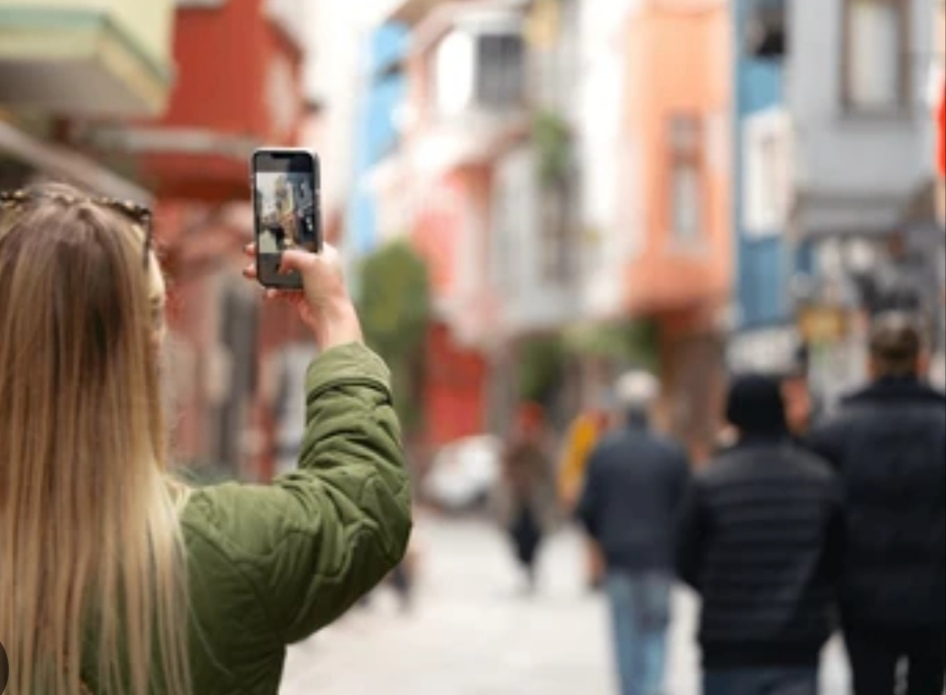
Foldable Phones with Advanced Cameras
The rise of foldable smartphones, such as the Samsung Galaxy Z Fold 5, marks a significant shift in the industry.
These devices offer innovative designs without compromising camera quality.
Equipped with multi-lens setups, foldable phones provide:
- Enhanced versatility: Users can easily switch between wide-angle, telephoto, and ultra-wide lenses while utilizing the larger screen for editing.
- Pro-level photography tools: Larger foldable displays act as excellent viewfinders, making it easier to compose shots.
- Improved selfie cameras: These phones now integrate high-resolution front-facing cameras for foldable users.
The future of foldable phones lies in their ability to offer seamless integration of flagship-level camera systems, bridging the gap between traditional smartphones and professional-grade cameras.
Increased Focus on AI Photography
Artificial intelligence (AI) is revolutionizing mobile photography.
AI-powered cameras can now recognize scenes, enhance colors, and even correct flaws in real time.
Leading smartphones, including the Google Pixel 8 Pro, are paving the way with advanced AI capabilities:
- Scene recognition: Automatically adjusts settings to match the environment, whether it’s a sunset or an indoor event.
- AI-powered editing: Features like magic eraser, background blur, and object removal allow for quick, professional-quality edits.
- Enhanced low-light performance: AI algorithms combine multiple exposures to produce crisp, detailed images in dim settings.
With such improvements, AI photography ensures even novice users can create stunning images effortlessly.
Expect AI to play an even greater role in the best camera phones of 2025, offering smarter, more intuitive features.
The Role of 1-Inch Sensors
The introduction of 1-inch sensors in smartphones, such as the Xiaomi 14 Ultra, has significantly improved image quality.
These sensors are closer in size to those found in traditional cameras, offering:
- Better low-light performance: Larger sensors capture more light, resulting in detailed photos in dark conditions.
- Enhanced dynamic range: Ensures that highlights and shadows are evenly balanced in complex lighting situations.
- Superior depth of field: Creates natural bokeh effects, making portraits stand out.
As 1-inch sensors become more common, they will redefine what smartphone cameras are capable of, rivaling even professional DSLR cameras.
Future of Periscope and Optical Zoom
Optical zoom technology is reaching new heights with periscope lenses.
Devices like the Samsung Galaxy S24 Ultra and the Vivo X100 Pro are leading this charge:
- Greater zoom ranges: Up to 10x optical zoom and 100x hybrid zoom for unparalleled clarity at a distance.
- Advanced stabilization: Keeps shots steady even at high zoom levels, ideal for wildlife and sports photography.
- Compact integration: Periscope lenses offer these features without increasing the phone’s thickness.
The future of periscope lenses lies in extending zoom capabilities further while maintaining excellent image quality.
This makes them a standout feature for those seeking the best camera phones of 2025.
Why These Trends Matter
As smartphone manufacturers continue to innovate, these trends highlight the technologies shaping smartphone photography today.
Whether you’re an enthusiast or a professional, staying updated on these advancements can help you choose a phone that aligns with your photography needs.
Don’t miss out on the chance to own a phone with cutting-edge photography features.
Explore our top picks for the best camera phones of 2025 and transform the way you capture memories!
Expert Tips for Maximizing Your Smartphone Photography
Smartphone cameras are more powerful than ever, and with the best camera phones of 2025, you can achieve breathtaking results.
Whether you’re a beginner or an experienced photographer, these expert tips will help you unlock your phone’s full potential and take stunning photos in every scenario.
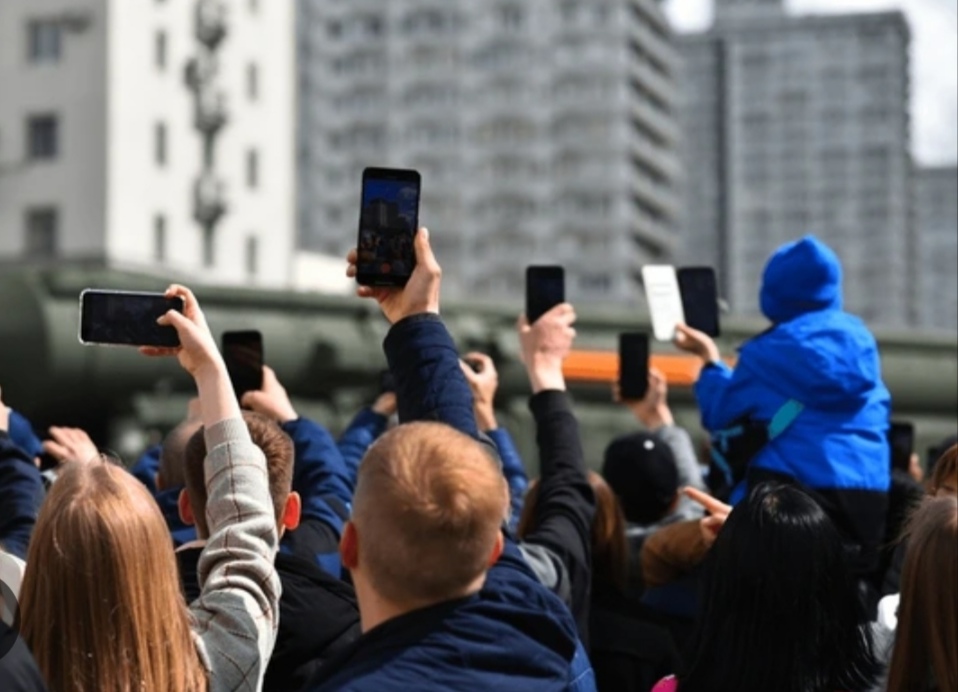
How to Use Pro Mode Like a Professional
Many high-end smartphones, like the Samsung Galaxy S24 Ultra and Google Pixel 8 Pro, come equipped with a Pro Mode that lets you manually control settings like ISO, shutter speed, and white balance. Here’s how to make the most of it:
- Understand ISO and Shutter Speed: Lower ISO settings are ideal for bright conditions, while higher ISO helps in low light but may introduce noise. Adjust the shutter speed to control motion blur—use slower speeds for night shots and faster speeds for action scenes.
- Set the White Balance: Avoid overly warm or cool tones by adjusting the white balance based on the light source (daylight, fluorescent, or tungsten).
- Use Manual Focus: Pro Mode allows you to fine-tune the focus, ensuring sharpness in macro shots or emphasizing specific subjects in portraits.
- RAW Capture: Enable RAW format for images to preserve maximum detail, allowing for advanced editing later.
Mastering Pro Mode transforms a casual click into a professional-grade photograph, especially when paired with a flagship device known for photography, like those in our recommended list of best camera phones 2025.
Tips for Capturing Stunning Night Photos
Low-light photography is one of the most challenging aspects of mobile photography.
However, modern devices with advanced AI and larger sensors, like the iPhone 15 Pro Max, excel in this area. Follow these tips to make your night shots shine:
- Use Night Mode: Take advantage of built-in night modes that combine multiple exposures for detailed, well-lit images.
- Stabilize Your Phone: Even slight hand movements can blur night shots. Use a tripod or lean your phone against a stable surface.
- Avoid Overexposure: Lights in the scene (like street lamps) can overwhelm your photo. Adjust exposure levels manually to maintain balance.
- Experiment with Light Trails: Capture dynamic shots by experimenting with slow shutter speeds to create light trails from vehicles or other moving lights.
- Keep ISO Low: While higher ISO is tempting, it can introduce noise. Use lower ISO settings and rely on Night Mode for clarity.
The best camera phones of 2025 feature advanced low-light photography capabilities, making night photography accessible for everyone.
Best Accessories for Mobile Photography
To take your mobile photography to the next level, investing in accessories can be a game-changer. Here are the best tools to enhance your shooting experience:
Gimbals for Stability
A gimbal is essential for recording smooth, professional-quality videos. Some top options include:
- DJI Osmo Mobile 6: Lightweight and portable, with excellent stabilization and tracking features.
- Zhiyun Smooth 5: Ideal for vloggers and mobile filmmakers, offering customizable controls.
With a gimbal, you can eliminate shaky footage, making your content look polished and cinematic.
External Lenses for Versatility
Expand your smartphone’s photographic capabilities with external lenses. They offer features like wide-angle, macro, and fisheye perspectives. Popular options include:
- Moment Lenses: Known for high-quality glass and compatibility with many flagship phones.
- Apexel Macro Lenses: Affordable options for stunning close-up photography.
Pairing these lenses with the best camera phones of 2025 unlocks endless creative possibilities.
Tripods for Long-Exposure Shots
Tripods are crucial for stability during long-exposure shots or time-lapse photography. Recommended options include:
- Manfrotto PIXI Mini Tripod: Compact and perfect for on-the-go photography.
- Joby GorillaPod: Versatile and can attach to various surfaces for unique angles.
Using a tripod allows you to explore advanced techniques like astrophotography and long-exposure light painting.
Take Your Smartphone Photography to the Next Level
With these tips and accessories, you can fully utilize the potential of your smartphone, capturing incredible images and videos.
Whether you’re upgrading to one of the best camera phones of 2025 or improving your skills, these insights will elevate your photography game.
Ready to elevate your mobile photography? Shop our recommended accessories and get the most out of the best camera phones of 2025 today!
Budget-Friendly Alternatives for Photography Enthusiasts
Not everyone wants to spend a fortune on high-end smartphones, but that doesn’t mean you have to compromise on camera quality.
Thankfully, budget-friendly camera phones are now more powerful than ever. Whether you’re a photography enthusiast or simply want great value for your money, there are fantastic options to consider.
Here, we’ll explore the best mid-range camera phones of 2025 and affordable options under $500, so you can make an informed choice without breaking the bank.

Best Mid-Range Camera Phones of 2025
Mid-range smartphones are bridging the gap between flagship features and affordable pricing.
The following phones offer excellent photography capabilities, making them a great choice for enthusiasts:
- Google Pixel 8a: Known for its computational photography, the Pixel 8a delivers stunning portrait shots and excels in low-light conditions thanks to Night Sight. Priced around $499, it’s a steal for its camera prowess.
- Samsung Galaxy A54: Featuring a 50MP main sensor, the Galaxy A54 offers vibrant and detailed shots. Its OIS (Optical Image Stabilization) ensures steady images and videos, even in challenging conditions.
- OnePlus Nord 3: With a 64MP camera and advanced software enhancements, the Nord 3 provides crisp and vibrant images. Its AI-assisted features help amateur photographers capture professional-looking shots effortlessly.
- Xiaomi Redmi Note 13 Pro: Boasting a 200MP primary sensor, this phone is an excellent choice for high-resolution photography on a budget. Its Pro Mode allows for manual adjustments, giving users more control over their shots.
Mid-range phones like these ensure you get advanced photography features without paying flagship prices.
Affordable Options Under $500
If you’re on a tighter budget but still want a phone with decent camera capabilities, there are plenty of affordable smartphones to consider:
- Motorola Edge 40 Neo: Priced under $400, this phone includes a 50MP ultra-wide lens and delivers impressive HDR shots. Its minimalistic UI is easy to use for beginners.
- Realme 11 Pro: Equipped with a 108MP camera, this device excels in dynamic range and color accuracy, making it perfect for casual photographers.
- Samsung Galaxy M14: At just $250, the Galaxy M14 offers excellent value with its 50MP triple-camera setup, which includes macro and depth sensors for versatile shooting.
- Poco X5 Pro: Featuring a 108MP sensor, this budget-friendly option is ideal for those who love landscape photography and vibrant colors.
Phones in this price range may lack flagship-level features like 8K video recording, but they deliver more than enough for social media uploads and casual photography.
How to Choose the Right Budget Camera Phone
When selecting the best budget-friendly camera phone, consider the following factors:
- Megapixels vs. Sensor Quality: Don’t be swayed by megapixel numbers alone. A 50MP camera with a high-quality sensor can outperform a 108MP camera with a smaller sensor.
- Low-Light Performance: Check for Night Mode or large aperture sizes (e.g., f/1.8) to ensure good low-light performance.
- Additional Features: Look for features like OIS, Pro Mode, or AI enhancements to improve your photography experience.
- Battery Life: Phones with powerful cameras often use more battery. Choose a phone with a large battery or fast-charging capabilities.
Affordable Phones That Compete with Flagships
Some budget-friendly options come dangerously close to competing with flagship models.
These phones are often referred to as “flagship killers.” For example, the OnePlus Nord 3 and Pixel 8a are excellent alternatives to flagship devices while being significantly more affordable.
Looking for a powerful camera phone on a budget?
Explore our top picks for the best mid-range and affordable camera phones and start capturing incredible photos without overspending!
FAQs About Smartphone Cameras
Curious about choosing the best camera phones in 2025?
You’re not alone! Below are some frequently asked questions to help you make an informed decision and enhance your smartphone photography experience.
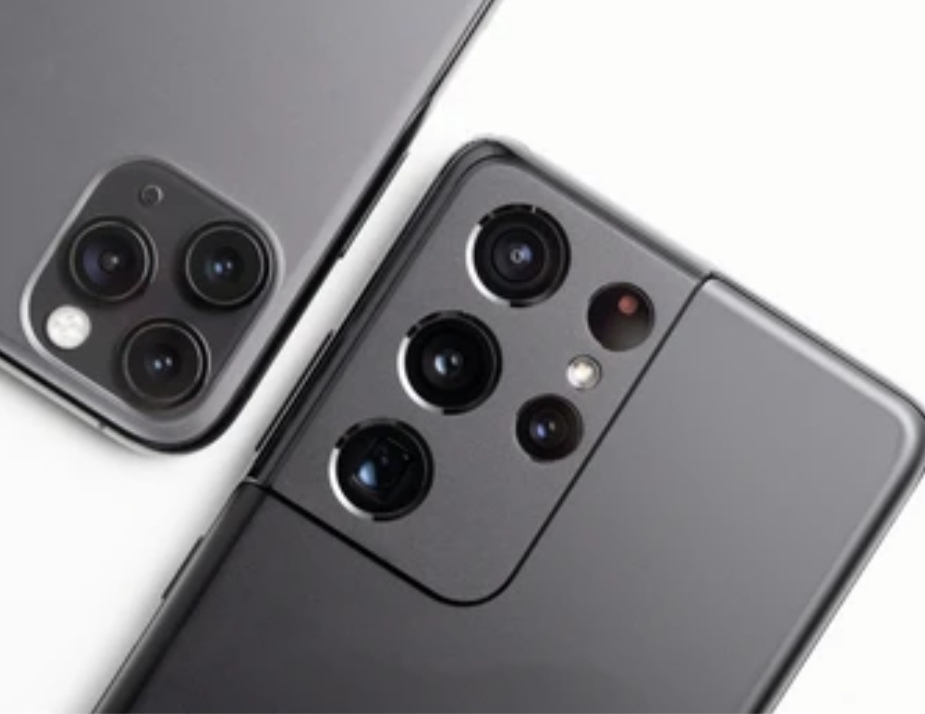
What Features Should I Look for in the Best Camera Phones of 2025?
When searching for the best camera phones of 2025, consider the following key features:
- High Megapixel Count: While megapixels aren’t everything, a higher count can improve image resolution, especially for cropping or printing photos.
- Low-Light Performance: Phones with larger sensors and wide apertures (e.g., f/1.5) excel in low-light conditions. Look for phones with Night Mode capabilities.
- Zoom Capabilities: Optical zoom is better than digital zoom. Phones with periscope lenses can achieve up to 10x optical zoom without losing quality.
- Video Quality: If you shoot videos often, ensure the phone supports 4K or 8K recording with stabilization features.
- AI Enhancements: AI can improve photo quality through scene detection, portrait effects, and real-time optimizations.
Are Budget-Friendly Phones Good for Photography?
Absolutely!
Many budget-friendly options like the Google Pixel 8a or Samsung Galaxy A54 deliver excellent photography performance without the high price tag.
While they may lack some flagship features, they excel in essentials like HDR, Night Mode, and basic manual controls.
Do I Need a 1-Inch Sensor on My Smartphone Camera?
A 1-inch sensor, such as those found in Xiaomi 13 Ultra or Sony Xperia Pro-I, can significantly improve image quality by capturing more light and detail.
However, it’s not a must-have for casual photographers.
If you’re a professional or want the absolute best quality, a phone with a 1-inch sensor is worth considering.
How Can I Improve My Smartphone Photography Skills?
Improving your skills is as important as having a good camera. Follow these tips:
- Learn Pro Mode: Adjust ISO, shutter speed, and white balance manually for creative control.
- Use Accessories: A tripod or gimbal can improve stability for better low-light and long-exposure shots.
- Explore Editing Apps: Apps like Lightroom and Snapseed allow for professional-grade photo editing.
- Understand Composition: Use techniques like the rule of thirds and leading lines to create visually appealing images.
Which Phones Offer the Best Zoom Capabilities in 2025?
The best camera phones of 2025 come equipped with cutting-edge zoom features. Look for phones with periscope lenses for optical zoom. Examples include:
- Samsung Galaxy S24 Ultra: Up to 10x optical zoom with minimal loss in quality.
- Google Pixel 8 Pro: Known for its computational zoom, delivering sharp details even at high magnifications.
Are Foldable Phones Good for Photography?
Yes, foldable phones like the Samsung Galaxy Z Fold 6 are becoming increasingly powerful photography tools.
They combine flagship camera features with the versatility of dual displays, making them great for multitasking and creative shooting angles.
Should I Upgrade to a Flagship Phone for Better Camera Features?
If photography is a priority, upgrading to a flagship phone like the iPhone 15 Pro Max or Xiaomi 13 Ultra is a worthwhile investment.
These phones provide advanced sensors, improved image processing, and versatile shooting modes that mid-range phones often lack.
How Often Should I Replace My Smartphone for Better Camera Quality?
Smartphone camera technology evolves rapidly.
Replacing your phone every 2–3 years ensures you stay updated with the latest advancements, such as improved sensors, AI enhancements, and better stabilization.
Ready to upgrade your photography game? Discover the best camera phones of 2025 and capture moments like never before!
Conclusion : Elevate Your Photography with the Best Camera Phones of 2025
The world of smartphone photography is evolving rapidly, with 2025 set to bring unprecedented advancements in camera technology.
From foldable phones equipped with cutting-edge sensors to budget-friendly models that don’t compromise on quality, there’s something for everyone.
Whether you’re a professional photographer or a casual user, the best camera phones of 2025 will empower you to capture stunning photos and videos with ease.
As we’ve explored, features like 1-inch sensors, AI-driven photography, and advanced optical zoom are no longer reserved for premium devices.
Even mid-range options are now capable of delivering exceptional results, making high-quality mobile photography more accessible than ever.
Don’t wait! Explore the best camera phones of 2025 today and take your photography to the next level.
Why Choose the Best Camera Phones of 2025?
Investing in a top-tier smartphone camera ensures you’re equipped with:
- Cutting-edge technology for sharper images and vibrant colors.
- Advanced tools like Night Mode, Pro Mode, and periscope zoom.
- Versatility to shoot professional-grade photos and videos in any setting.
If you’re a content creator, social media enthusiast, or someone who cherishes preserving memories, upgrading to one of the best camera phones of 2025 is a smart choice.
Take Action Today
As technology advances, so does the way we capture life’s moments.
Don’t settle for less when you can have the best. Click here to discover the best camera phones of 2025 and find the perfect device that fits your style and budget.
Remember, a great smartphone camera is more than just a gadget—it’s a tool to tell your story.
Let the innovation of 2025 help you craft unforgettable visual memories.
You might also like :

